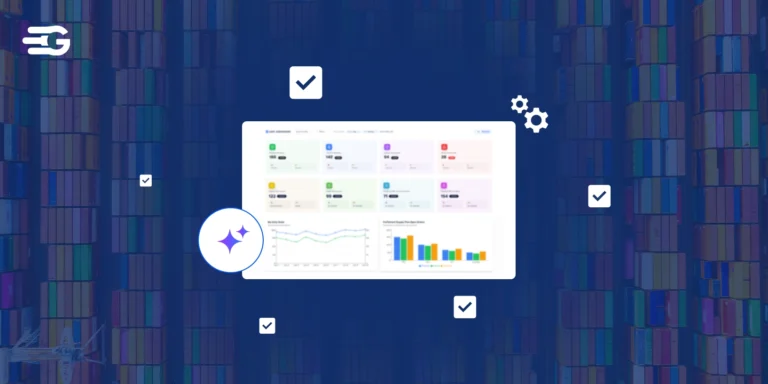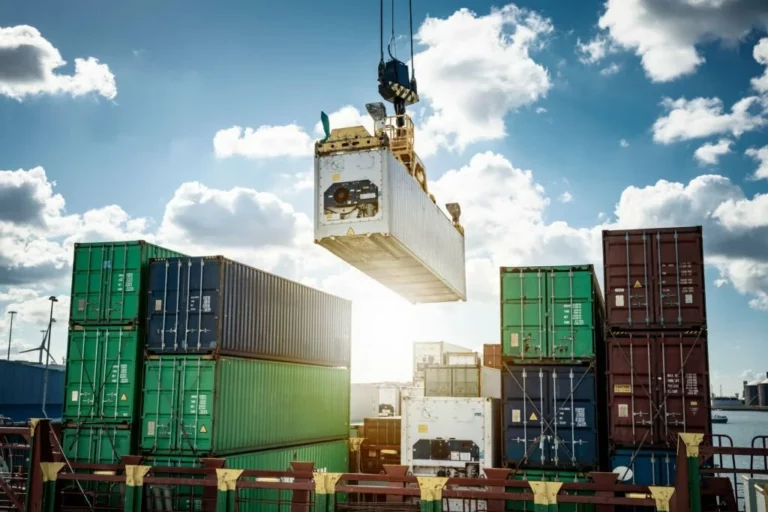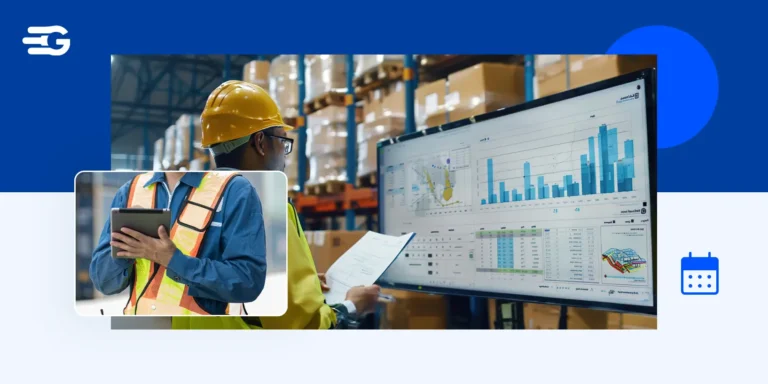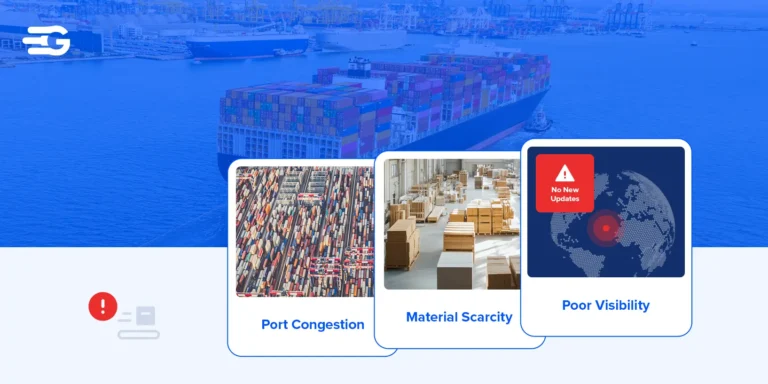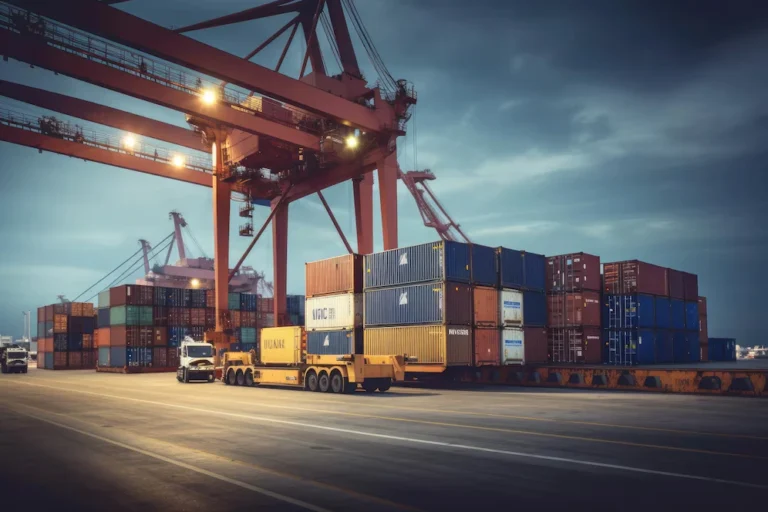How to Choose The Best Drayage TMS
Drayage, the movement of freight containers over short distances, is a crucial yet complex link in the global supply chain. Traditionally, managing drayage operations involved a lot of manual work, leading to inefficiencies and delays. This is where Drayage Transportation Management Systems (Drayage TMS) come in.
Drayage TMS are software solutions designed specifically for the needs of drayage companies, shippers, and brokers. They integrate various aspects of drayage operations into a single platform, offering significant advantages for all parties involved.
Drayage TMS offers a powerful suite of benefits for shippers and brokers. It provides real-time shipment tracking, automates tasks for improved efficiency, optimizes carrier selection to reduce costs, streamlines communication across the supply chain, ensures regulatory compliance, and empowers data-driven decision-making for a more efficient and cost-effective drayage operation.
Understanding Drayage TMS
Unlike a general TMS, which focuses on managing all aspects of freight movement across various transportation modes, Drayage TMS caters specifically to the complexities of drayage operations.
Here’s what sets Drayage TMS apart:
- Focus on Short-Haul: General TMS handles long-haul transportation planning and execution, while Drayage TMS optimizes the first and last-mile movement of containers within terminals and yards.
- Container Tracking: Drayage TMS offers real-time tracking of containers, providing visibility into location, estimated arrival times, and potential delays. This level of detail is crucial for managing drayage operations.
- Appointment Scheduling: Drayage TMS facilitates appointment scheduling with terminals and depots, ensuring smooth pick-up and drop-off of containers within designated timeframes. General TMS may not have this specific functionality.
- Compliance Management: Drayage TMS helps navigate the specific regulations governing drayage, such as driver hours of service and cargo security. It automates documentation, record-keeping, and compliance in international trading.
In essence, Drayage TMS is a specialized tool that tackles the unique challenges of drayage by offering functionalities tailored for container tracking, appointment scheduling, and ensuring regulatory compliance within the short-haul environment.
Also Read: What is Drayage?
Benefits of Implementing Drayage TMS
Drayage Transportation Management Systems (Drayage TMS) automates dispatching and route optimization, assigning drivers and equipment efficiently. This eliminates manual dock scheduling hassles and creates optimized routes that minimize travel times and fuel consumption, leading to faster turnaround times.
Drayage TMS automates tasks like dispatching, invoicing, and detention time tracking. This minimizes manual errors and streamlines operations, reducing administrative costs.
Drayage TMS provides real-time tracking of containers throughout their journey. Shippers, brokers, and consignees can access up-to-date location information, estimated arrival times (ETAs), and any potential delays. This transparency allows for proactive communication and informed decision-making.
Additionally, data analytics capabilities within Drayage TMS can identify trends and inefficiencies, enabling continuous improvement and cost optimization for future shipments.
Challenges and Considerations
Firstly, transitioning from our current system will involve migrating existing drayage data, which can be complex and time-consuming. To ensure a smooth transition, we recommend prioritizing data cleansing to eliminate any errors beforehand.
Secondly, encouraging our team to embrace the new system is crucial. Comprehensive training programs tailored to different user skill sets will minimize resistance and maximize user adoption. Clear communication regarding the benefits of the new system throughout the process will also be important.
Integration with our existing systems like accounting software and warehouse management systems is another hurdle to consider. Early collaboration with our IT team will ensure a smooth integration process.
Finally, transitioning from established workflows requires a well-defined change management strategy. A phased implementation plan, starting with core functionalities and gradually integrating advanced features, will minimize disruption and allow users to adapt at their own pace.
Investing in a Drayage TMS is a smart, data-driven decision that improves efficiency, reduces costs, and provides real-time visibility across the supply chain. By adopting a TMS, drayage operations can become more streamlined and competitive. To learn more about how a TMS works and its benefits, check out this guide to Transportation Management System.
Choosing the Right Drayage TMS: Functionality and Fit
Selecting the ideal Drayage TMS requires careful consideration of both features and compatibility with your specific needs. Here’s a breakdown of key features and how to choose the right system:
Key Features:
Seamless integration with your existing systems (e.g., warehouse management systems, accounting software) and partner platforms (e.g., carriers, terminals) is crucial for streamlined data flow and efficient operations.
An intuitive and easy-to-use interface fosters rapid adoption by users and minimizes training time. This ensures efficient day-to-day operations and maximizes the value of your Drayage TMS.
As your business grows, your Drayage TMS should be able to scale to accommodate increasing volumes and evolving needs. Look for a system with flexible configurations and the ability to handle future expansion.
Ensure the Drayage TMS helps you navigate the complexities of drayage regulations, including driver hours of service, cargo security, and record-keeping. Automated features can minimize compliance risks and ensure timely document management.
Choosing the Right System:
Optimizing your drayage operations hinges on selecting the perfect Drayage Transportation Management System (Drayage TMS). This isn’t a one-size-fits-all decision – a data-driven approach is crucial to ensure you unlock the system’s full potential and achieve maximum efficiency.
Identifying Your Drayage Pain Points
Before diving into the world of Drayage TMS options, take a deep dive into your current operations. Conduct a thorough self-assessment to pinpoint your specific challenges and areas for improvement. Here are some key questions to ask yourself:
- What are our biggest bottlenecks in drayage operations? Are turnaround times slow? Are there frequent delays due to manual processes or lack of visibility?
- Do we struggle with inefficient routing or rising fuel costs?
- How effectively do we manage appointments with terminals and depots? Missed appointments can lead to significant delays and demurrage charges.
- Is regulatory compliance a challenge? Do we have a system for managing driver hours of service and cargo security documentation?
- How well do we collaborate with carriers and other stakeholders? Inefficient communication can lead to confusion and missed deadlines.
The “How”
First, create a feature checklist comparing functionalities across various providers. Prioritize features that directly address your pain points, such as real-time tracking, route optimization, and automated tasks. Pricing models also deserve scrutiny – subscription fees might differ from per-transaction costs.
Choose a solution that aligns with your budget and volume of operations. Don’t forget about customer support!
Reliable and responsive assistance is essential for a smooth implementation and ongoing user experience. Research response times, support channels, and training resources offered by different providers, and finally, go beyond brochures and websites.
Take advantage of demos and free trials to experience the systems firsthand. Test functionalities, assess user-friendliness, and see how well they integrate with your existing systems. To gain even deeper insights, leverage user reviews and industry recommendations.
This comprehensive approach, combining research, hands-on testing, and real-world experiences, will empower you to select the ideal Drayage TMS and unlock a world of efficiency within your drayage operations.
GoComet TMS: Your All-in-One Drayage Management Solution
While GoComet TMS isn’t a specialized Drayage TMS, it can be a powerful asset for streamlining your short-haul container movement and capturing the benefits typically offered by such systems. Here’s how GoComet empowers your drayage operations:
- Comprehensive Functionality: GoComet TMS offers a robust suite of features that directly address key drayage needs. You’ll gain real-time visibility into your shipments, allowing for proactive cargo tracking and informed decision-making. Automated dispatching and route optimization minimize turnaround times and fuel costs.
- Data-Driven Efficiency: GoComet empowers data-driven decision-making. Through comprehensive data analytics, you can identify trends, optimize routes for future shipments, and continuously improve your drayage operations. This translates to greater efficiency and cost control over the long term.
- Flexibility and Scalability: Unlike specialized Drayage TMS solutions, GoComet offers the flexibility to manage your entire transportation network, not just drayage operations. This provides a holistic view of your logistics and simplifies your technology stack.
- Seamless Integration: GoComet integrates seamlessly with various existing systems, including warehouse management systems and accounting software. This eliminates data silos and ensures a smooth flow of information across your entire supply chain.
By leveraging GoComet TMS, you can achieve many of the same benefits traditionally associated with Drayage TMS solutions, all within a comprehensive transportation management platform. This provides a future-proof solution that adapts to your evolving needs and empowers you to navigate the complexities of drayage operations with greater efficiency, visibility, and control.
Considering a Specialized Drayage TMS?
While GoComet offers a compelling alternative, we understand that specific needs might necessitate a Drayage TMS. GoComet can still play a vital role in this scenario. By integrating GoComet with your Drayage TMS, you can gain a unified view of your entire transportation network, including drayage operations and long-haul movements.
This comprehensive approach ensures complete visibility and control across your entire logistics ecosystem.
Conclusion
In a dynamic supply chain landscape, the right Drayage Transportation Management System (Drayage TMS) can be a game-changer, unlocking significant efficiency gains and cost reductions. Imagine real-time shipment tracking, streamlined communication across your supply chain, and automated processes that minimize errors and free up valuable resources. A Drayage TMS empowers you to achieve just that.
By carefully considering your needs and implementing a solution with features like real-time tracking, route optimization, and data analytics, you can transform your drayage operations. Reduced turnaround times, minimized fuel costs, and improved decision-making all contribute to a more efficient and cost-effective bottom line.
Explore GoComet’s comprehensive solutions designed to address all your short-haul transportation needs. GoComet offers a robust suite of features that rival specialized Drayage TMS solutions, empowering you with real-time visibility, data-driven decision-making, and seamless integration with your existing systems.

